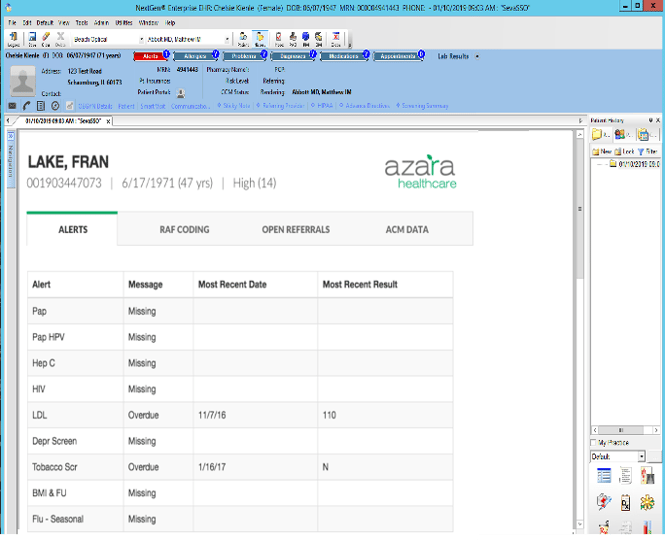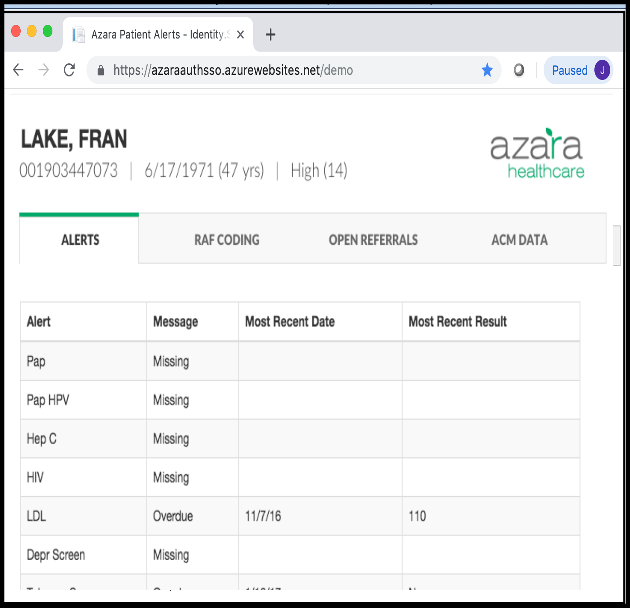Since Summer 2019, Azara clients with the DRVS EHR Plug-In have enjoyed the ability to access pieces of DRVS data from within their EHR directly. This has allowed for the widespread adoption and use of DRVS functionality related to Alerts, Open Referrals, Risk Adjustment Factor (RAF) coding and Azara Care Management (ACM).
Health centers who desire access to their DRVS data at the point of care have implemented the EHR Plug-In in order to remove the need to dig through the patient chart and sign-in to multiple systems. The Plug-In gives users quick access to the actionable information found on the DRVS Patient Visit Planning report and is used by clients to address care gaps and remind providers of other items required for the patient.
All of the Health centers that have implemented the core DRVS product are able to access patient information such as overdue vaccinations, screenings, and a variety of other clinical alerts such as recent ED or Inpatient visits (when available) while in the patient electronic chart.
Transparency into open referrals allows the provider to view outstanding referrals and assist the patient in progressing toward completing the recommended activity. For example, a patient who has been referred to an imaging center for a mammogram but has not yet made the appointment will show on the open referrals list. Health center staff can then assist with setting up the appointment and potentially arranging for transportation, if necessary, to help ensure the patient can follow through.
The RAF Coding tab helps simplify the task of providers needing to annually maintain the payer’s awareness of the patient’s chronic conditions. Traditionally, providers were required to pay close attention to make certain all the patient's conditions are coded at least once per calendar year to assure proper risk adjustment and payments. With the EHR Plug-In, a list of the patient’s conditions that have not yet been coded are displayed as a prescriptive reminder to the provider to make sure they are recorded as part of the encounter.
For those users with the Azara Care Management product, the Plug-In gives the medical staff a view into the Care Plan that has been designed for the patient by the Care Management team without having to log-in to two systems.
Over the past year, it has been exciting to watch the adoption of this component of DRVS. From my perspective, it has allowed many more users, in particular providers, to gain access to DRVS data. One of Azara’s largest health centers has 400 unique users accessing DRVS data through the EHR on a weekly basis, leading to a streamlined delivery of information across the organization resulting in time savings for care teams and better clinical care for patients.
View from NextGen and Athena:





